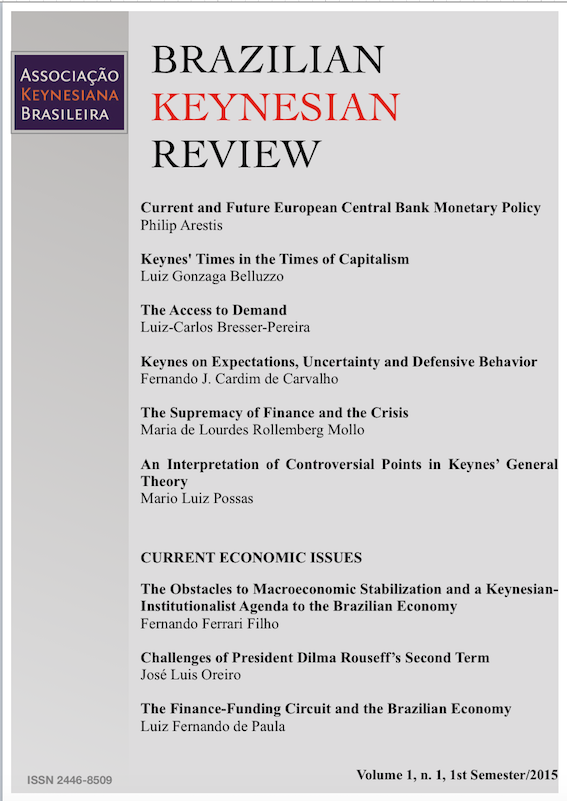An Interpretation of Controversial Points in Keynes's General Theory
Resumo
The paper offers an interpretation of the General Theory based on two main assumptions: (i) that its core is heterodox (meaning far from Neoclassical references) and (ii) that, while not working out a dynamic model, it is neither static nor based on the notion of equilibrium in the usual sense, i.e. as an attractor. It amounts rather to a foreword to a dynamic theory, given its emphasis on (future) time and expectations. The exposition is centered on the division between short and long run (period) with corresponding particularities and distinctions. In the first case, a more general concept of the principle of effective demand is proposed, from which the relation investment/savings, supply and demand functions at the Micro level – where basic variables are determined -, the “point of effective demand” and corresponding aggregative versions are interpreted. In the second case, investment decisions are examined on the light of chap. 17, concerning investment in capital assets, i.e. individual demand for assets. The central concept of uncertainty is introduced here, giving place to money as an asset as well as to liquidity preference and the rate of interest theories. Long term expectations under uncertainty give rise to other two key concepts – the state of confidence and the convention. As a result, his peculiar and crucial notion of instability of investment follows, as well as its extension to the capitalist economy as a whole.
Downloads
- Autores mantém os direitos autorais e concedem à revista o direito de primeira publicação, com o trabalho simultaneamente licenciado sob a Licença Creative Commons Attribution que permite o compartilhamento do trabalho com reconhecimento da autoria e publicação inicial nesta revista.
- Autores têm autorização para assumir contratos adicionais separadamente, para distribuição não-exclusiva da versão do trabalho publicada nesta revista (ex.: publicar em repositório institucional ou como capítulo de livro), com reconhecimento de autoria e publicação inicial nesta revista.
- Autores têm permissão e são estimulados a publicar e distribuir seu trabalho online (ex.: em repositórios institucionais ou na sua página pessoal) a qualquer ponto antes ou durante o processo editorial, já que isso pode gerar alterações produtivas, bem como aumentar o impacto e a citação do trabalho publicado (Veja O Efeito do Acesso Livre).


